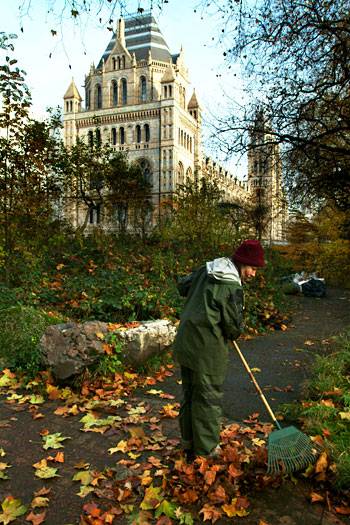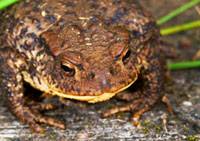Autumn in the Wildlife Garden is busy for everyone
It's your last chance to enjoy the beautiful autumn colours in the Museum’s Wildlife Garden, before it closes at the end of the day on Saturday 31 October. It re-opens in spring on 1 April 2010.
But although the garden gate may be closing, you are always welcome to ring our information desk if you want to visit during the winter months. The number is at the top of our Wildlife Garden page on the website.
For those who might not get the chance to come now, here’s a bit about what’s been going on in our garden this autumn.
Most recent sightings in the garden have included several common moths such as the large underwing moth and the brick moth, a determined fox who has often been seen stalking birds, shield bugs and a magnificent kestrel spotted swooping down for a quick snack mouse. Just today, a gorgeous goldfinch has appeared, so maybe we will see more of these lovely birds in the future.
By November the different shades of autumn are completely transforming the Wildlife Garden to a rich palette of yellow, orange, red, pink and brown.
'Please leave us some leaves to hide in'
Leaf raking has been taking place since early October to keep the paths clear for visitors, and to protect the grassland. Fallen leaves are left in hedges and woodland to break down naturally – helped by invertebrates living in leaf litter – and to provide refuges for animals such as toads. Leaf-raking chores have been made easier thanks to a big infux of volunteers from the nearby Imperial College. At this time of year, about 12 people (most are part-time) help look after the garden during the week and another 12-15 assist on weekends once a month. At the moment there is much to do.
The butter-yellow lime leaves were the first to fall and these trees will be the first to stand unclad. The London plane trees towering high above the garden are now turning orange brown. Plane tree leaves are very leathery and unlike our native trees, take ages to break down, so our garden carers have to gently remove them from certain areas and shred them up for re-scattering. (Otherwise they’d smother other plants beneath.) It’s the beech leaves which turn that gorgeous rich toffee colour, while the field maple and hornbeam go golden yellow and rowan pink and red. The wonder and diversity of trees!
It has been a busy time for many of the garden’s animal residents too.
From early autumn, fruits and berries have been ripening and birds and small mammals start harvesting before the winter and seasonal food shortages begin. The earliest berries to mature were rowan – they don’t remain on the trees for long as birds swoop in on them to devour the orange-red juicy fruits. In the hedgerows, blackbirds have been feasting on dark blackberries and bluish-purple sloes.
Cracked shells are everywhere in evidence of hazel nuts and acorns collected by squirrels, wood mice and jays – some are stored and some are eaten.
As well as the general upkeep that autumn changes make necessary in the garden, the wildlife gardeners’ work during the early winter months includes feeding birds, checking nest boxes and making any necessary repairs to the moorhens’ island.
Thanks to the Wildlife Garden team for their updates. Follow the What's new blog for more updates on our winter activities in the garden.




